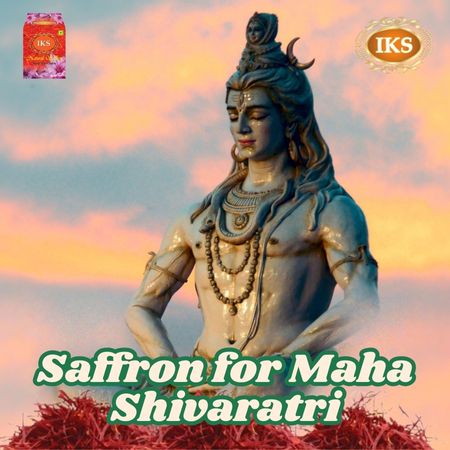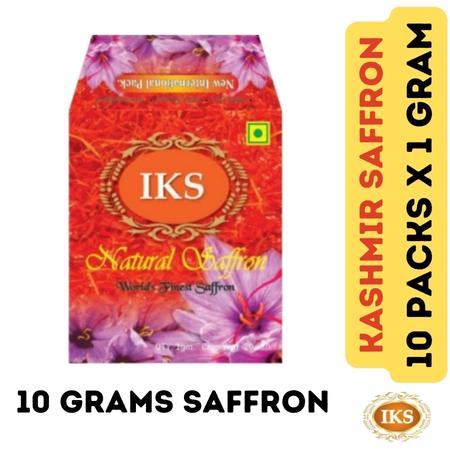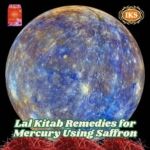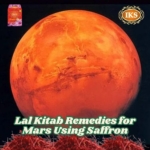Saffron for Maha Shivaratri: Significance of Kesar, Benefits, and Ritual Usage
Saffron for Maha Shivaratri: Significance, Benefits, and Ritual Usage
Saffron for Maha Shivaratri – Maha Shivaratri, often referred to as the “Great Night of Shiva,” is one of the most auspicious festivals dedicated to Lord Shiva, celebrated with immense devotion and fervor by Hindus across the world.
Falling on the 14th night of the new moon in the Hindu month of Phalgun (February-March), this festival holds immense spiritual and cultural significance. One of the key elements of Maha Shivaratri rituals is the offering of sacred items to the Shiva Lingam, and among these offerings, saffron stands out due to its profound symbolism, spiritual importance, and benefits.
In this article, we’ll explore the role of saffron in Maha Shivaratri rituals, its spiritual and health benefits, and how it enhances the worship of Lord Shiva.
🙏 Offer the Purest Saffron to Lord Shiva This Maha Shivaratri! Shop Now for Original Kashmiri Kesar! 🕉️
What is Maha Shivaratri?
Maha Shivaratri is a festival celebrated to honor Lord Shiva, one of the most revered deities in Hinduism and a member of the Hindu Trinity (Brahma, Vishnu, and Shiva). This festival symbolizes the cosmic dance of creation, preservation, and destruction, which is an integral aspect of Shiva’s divine role.
Key Rituals of Maha Shivaratri:
- Fasting: Devotees observe a strict fast, refraining from consuming grains and some even abstain from water.
- Jaagran (Night Vigil): Singing hymns and devotional songs throughout the night.
- Ritual Bath of the Shiva Lingam: Offering sacred substances like milk, honey, yogurt, ghee, sugar, water, and saffron to the Shiva Lingam.
The festival is marked by deep devotion, meditation, and prayers, as devotees seek the blessings of Lord Shiva for inner peace, prosperity, and spiritual enlightenment.
🕉️ Elevate Your Shivling Abhishekam Rituals with Premium Saffron – Order Today! 🌼
The Significance of Ritual Offerings on Maha Shivaratri
In Hinduism, ritual offerings are a profound expression of devotion, gratitude, and reverence toward the divine. They symbolize the surrender of one’s ego and material desires while seeking blessings and spiritual connection. Each item offered during worship carries a unique spiritual and symbolic significance, and this is especially evident during Maha Shivaratri, one of the most sacred festivals dedicated to Lord Shiva.
On this auspicious day, devotees perform the ritual bath (Abhishekam) of the Shiva Lingam, an embodiment of Lord Shiva, using a variety of sacred items. Each offering is chosen with deep meaning, representing different aspects of spiritual growth and cosmic balance. These offerings are not just material substances—they are symbolic gestures that honor the divine qualities of Lord Shiva and the cosmic principles he embodies.
Let us explore the deeper meaning behind the key offerings made to the Shiva Lingam during Maha Shivaratri:
Milk: Purity and the Cooling of Lord Shiva’s Energy
Milk is one of the most common and significant offerings made to the Shiva Lingam. It symbolizes purity, nourishment, and selflessness, qualities that are integral to spiritual growth. According to Hindu mythology, Lord Shiva is often depicted as a deity who absorbs the negative energies and toxins of the world to protect his devotees. The offering of milk is believed to have a cooling effect, soothing his fiery and transformative energy.
Furthermore, milk represents the essence of life and sustenance. By offering milk, devotees seek to purify their thoughts, actions, and intentions, aligning themselves with the purity and compassion of Lord Shiva.
Honey: Sweetness, Devotion, and Harmony
Honey is another sacred offering poured over the Shiva Lingam during Maha Shivaratri. It is a symbol of sweetness, devotion, and harmony. Honey, being a natural substance created through the intricate work of bees, represents the beauty of unity and cooperation in nature. Offering honey signifies the surrender of one’s ego and the cultivation of sweetness in speech, thoughts, and actions.
In the spiritual sense, honey represents unconditional love and devotion. By offering honey, devotees express their deep love for Lord Shiva and their desire to lead a life filled with harmony and sweetness.
Saffron: Auspiciousness, Prosperity, and Purity
Saffron, a rare and precious spice, holds a prominent place in Hindu rituals. Its vibrant golden color and distinct aroma symbolize auspiciousness, prosperity, and purity. Offering saffron to the Shiva Lingam is believed to attract positive energy, remove negativity, and invoke divine blessings.
Saffron also has a transformative quality, representing the fire of creation and spiritual illumination. In the context of Maha Shivaratri, saffron is used to honor Lord Shiva’s role as the cosmic creator and destroyer, helping devotees connect with their inner strength and higher consciousness.
Among all the offerings, saffron holds a unique position due to its sacredness and ability to elevate spiritual practices. It reflects the devotee’s desire to offer the best and most precious items to Lord Shiva, symbolizing their unwavering dedication and faith.
Bael Leaves (Bilva Patra): Purification and Detoxification
The offering of Bael leaves, also known as Bilva Patra, is considered one of the most important rituals during Maha Shivaratri. According to Hindu scriptures, Lord Shiva is particularly fond of Bael leaves, and their three-lobed structure is said to represent his sacred trinity: creation, preservation, and destruction.
Bael leaves are also rich in medicinal properties and are known for their detoxifying and purifying qualities, symbolizing the removal of impurities from the mind, body, and soul. Offering Bael leaves signifies the devotee’s intent to purify their heart and align themselves with the divine energy of Lord Shiva.
In addition, it is believed that offering Bael leaves during Maha Shivaratri helps in overcoming sins, negative karma, and obstacles, leading to spiritual growth and liberation.
Water: The Elixir of Life and Purity of Thought
Water, the most elemental offering, holds immense spiritual significance in Hindu rituals. Representing the elixir of life, water symbolizes purity, clarity, and renewal. It is offered to the Shiva Lingam to cleanse and purify the deity, as well as the devotee’s own thoughts and soul.
Water also represents the flow of life and emotions, reminding devotees of the impermanence of material existence. By pouring water over the Shiva Lingam, devotees seek to wash away their sins and negative tendencies, allowing them to embrace a life of simplicity, humility, and spiritual awakening.
In the context of Maha Shivaratri, the continuous pouring of water signifies the devotee’s unwavering focus and dedication to Lord Shiva, as they chant the sacred mantra “Om Namah Shivaya” to invoke his divine blessings.
The Unique Role of Saffron Among Offerings
While every offering made to Lord Shiva carries profound meaning, saffron holds a special place in Maha Shivaratri rituals. Its rarity and sacredness make it an ideal symbol of the devotee’s highest intentions and aspirations. Saffron not only enhances the ritualistic aspect of worship but also serves as a reminder of Lord Shiva’s transformative power and his ability to guide devotees toward spiritual enlightenment.
Saffron is often used in combination with other offerings, such as milk, honey, and water, to create a harmonious and auspicious environment during the ritual. Its golden hue symbolizes the light of wisdom and divine grace, while its unique aroma uplifts the spirit and deepens the connection between the devotee and Lord Shiva.
🙌 Celebrate Maha Shivaratri with Divine Purity! Buy Authentic Saffron for Bhole Baba! 🔱
Importance of Saffron in Hinduism
Saffron, also known as Kesar in Hindi, is a precious spice derived from the flower of Crocus sativus. Its vibrant golden hue and distinct aroma make it a symbol of purity, auspiciousness, and prosperity in Hindu rituals.
Spiritual Significance of Saffron:
- Symbol of Purity: Saffron’s golden color is associated with divinity and enlightenment.
- Auspiciousness: It is believed to attract positive energy and ward off negativity.
- Connection to Deities: Saffron is often used to adorn idols and sacred objects, signifying respect and devotion.
In Hindu scriptures, saffron is revered as a sacred ingredient that symbolizes the fiery energy of creation and transformation, making it an ideal offering for Lord Shiva during Maha Shivaratri.
The Role of Saffron in Maha Shivaratri Worship
Saffron, often referred to as the “golden spice,” holds a highly revered status in Hindu worship due to its auspiciousness, purity, and sacredness. During Maha Shivaratri, the use of saffron in rituals dedicated to Lord Shiva is particularly significant. It is believed that saffron not only enhances the sanctity of the rituals but also helps devotees deepen their spiritual connection with the divine.
In Maha Shivaratri worship, the Shiva Lingam, which represents the formless and all-encompassing nature of Lord Shiva, is at the center of devotion. Saffron is offered to the Shiva Lingam in various forms, each with profound symbolic and spiritual meaning.
Offering Saffron to the Shiva Lingam
The ritual use of saffron during Maha Shivaratri is both practical and symbolic, reflecting the essence of devotion and the desire to offer one’s best to Lord Shiva. Here are the primary ways saffron is used in worship:
1. Saffron Water: Purification and Divine Blessings
One of the most common and meaningful ways saffron is used in Maha Shivaratri rituals is by preparing saffron-infused water for the sacred bath (Abhishekam) of the Shiva Lingam.
- Preparation: A few strands of saffron are soaked in warm water for some time, allowing the water to take on a golden hue and the aromatic essence of saffron.
- Ritual Use: This saffron water is poured over the Shiva Lingam as part of the Abhishekam, a central ritual in Lord Shiva’s worship.
Symbolic Meaning:
- Saffron water represents purity, prosperity, and spiritual illumination. It is believed to cleanse not only the Shiva Lingam but also the mind, body, and soul of the devotee performing the ritual.
- The act of pouring saffron water over the Lingam signifies the surrender of material desires and the seeking of Lord Shiva’s blessings for spiritual growth and inner peace.
- The golden color of saffron water is symbolic of divine energy and enlightenment, qualities that Lord Shiva embodies.
2. Saffron Paste: Devotion and Offering of One’s Best
Saffron paste is another significant offering during Maha Shivaratri rituals. Devotees meticulously prepare a paste by mixing saffron strands with a small amount of milk or water.
- Preparation: A thick kesar paste is created by grinding or soaking the threads in milk or water until it forms a smooth consistency.
- Ritual Use: This paste is applied to the Shiva Lingam, often in a circular motion, as a mark of devotion and respect.
Symbolic Meaning:
- Saffron paste is seen as an offering of one’s best and most precious resources to Lord Shiva. It reflects the devotee’s effort, care, and love in preparing something valuable for the deity.
- The application of saffron paste symbolizes purity of heart and mind, as saffron is considered one of the purest substances in Hinduism.
- It is also believed that saffron paste enhances the spiritual aura of the worship space, creating a divine and meditative atmosphere.
3. Saffron in Prasad Preparation: Sharing Divine Grace
Saffron is not only offered to the Shiva Lingam but is also used in the preparation of prasad—the sacred food offered to Lord Shiva and later distributed among devotees.
- Saffron-Infused Sweets: Devotees prepare special sweets such as kesar halwa (a saffron-infused semolina dessert), saffron kheer (rice pudding), or saffron-infused ladoos as offerings to Lord Shiva.
- Saffron Milk: Warm milk infused with saffron is also a popular prasad item, symbolizing nourishment and divine blessings.
Symbolic Meaning:
- Saffron-laden prasad is associated with the sharing of divine grace. Consuming prasad is believed to purify the soul and imbue the devotee with positive energy and spiritual vitality.
- The golden hue of saffron sweets and milk signifies prosperity, abundance, and divine favor, making it an ideal offering to Lord Shiva.
- Preparing prasad with saffron reflects the devotee’s dedication and gratitude toward Lord Shiva, as they offer something both sacred and nourishing.
The Spiritual Significance of Using Saffron
The use of saffron in Maha Shivaratri rituals goes beyond its practical applications. It carries a profound spiritual energy that aligns with the qualities of Lord Shiva and the themes of Maha Shivaratri, such as purification, transformation, and enlightenment.
- Saffron as a Symbol of Transformation: Just as saffron transforms water into a golden, fragrant liquid, it symbolizes the transformation of the human soul through devotion and spiritual practice.
- Auspicious and Sacred: Saffron is considered one of the most sacred substances in Hinduism, making it a fitting offering for Maha Shivaratri, a festival that celebrates Lord Shiva’s divine qualities.
- Enhancing Spiritual Energy: The vibrant aroma and color of saffron are believed to elevate the spiritual vibrations of the worship space, helping devotees focus their minds and deepen their meditation during Maha Shivaratri.
The Connection Between Saffron and Lord Shiva
Saffron’s transformative properties resonate deeply with the essence of Lord Shiva. Shiva is often regarded as the cosmic force responsible for both destruction and creation, enabling the renewal and transformation of the universe. Similarly, saffron represents the energy of transformation, making it an ideal offering during Maha Shivaratri.
- Spiritual Purity: Saffron’s purity reflects the purity of Lord Shiva, who embodies the ultimate truth and consciousness.
- Auspiciousness: Much like Lord Shiva’s blessings, saffron is believed to bring prosperity and remove obstacles from one’s life.
- Devotion: The rarity and value of saffron reflect the depth of a devotee’s love and devotion to Lord Shiva.
How Saffron Enhances the Worship Experience
The inclusion of saffron in Maha Shivaratri rituals adds a layer of richness and sanctity to the worship. It is believed that saffron amplifies the spiritual energy of the rituals, helping devotees:
- Invoke Lord Shiva’s Blessings: Saffron is seen as a medium through which devotees connect with Lord Shiva and seek his divine blessings.
- Purify the Mind and Body: The act of offering saffron, whether through water, paste, or prasad, is symbolic of cleansing one’s inner self and attaining a state of purity.
- Deepen Devotion: The preparation and use of saffron involve care and effort, reflecting the devotee’s heartfelt dedication to Lord Shiva.
🌟 Experience Spiritual Bliss This Maha Shivaratri – Get Pure Kashmiri Kesar for Sacred Offerings! 🚩
How to Use Saffron During Maha Shivaratri
Saffron, a highly revered and auspicious ingredient in Hindu rituals, holds a unique place in the celebration of Maha Shivaratri. Its golden hue, spiritual significance, and uplifting aroma make it a powerful component in the worship of Lord Shiva. Incorporating saffron into your Maha Shivaratri rituals not only enhances the sanctity of your offerings but also deepens your spiritual connection with the divine.
Here are some practical and meaningful ways to use saffron during Maha Shivaratri celebrations, each carrying its own symbolic and spiritual significance:
1. Saffron Water for Abhishekam
The ritual bath (Abhishekam) of the Shiva Lingam is one of the most significant aspects of Maha Shivaratri worship. Saffron water, prepared by infusing saffron strands in warm water, is a powerful way to purify and honor Lord Shiva during this sacred ritual.
Steps to Prepare and Use Saffron Water:
- Preparation:
- Take a few strands of high-quality saffron and soak them in warm water for at least 30 minutes. As the saffron infuses, the water will take on a vibrant golden-yellow hue and emit a soothing aroma.
- Usage:
- Pour the saffron-infused water over the Shiva Lingam as part of the Abhishekam ritual.
- While performing this act, chant the sacred mantra “Om Namah Shivaya” to invoke Lord Shiva’s blessings and create a spiritually charged atmosphere.
Spiritual Significance:
- Saffron water represents purity, prosperity, and spiritual illumination. By offering saffron water during the Abhishekam, devotees cleanse the Shiva Lingam and symbolically purify their own minds, bodies, and souls.
- The golden color of saffron water is symbolic of divine energy and enlightenment, qualities that Lord Shiva embodies.
- Chanting “Om Namah Shivaya” while pouring saffron water enhances the ritual’s spiritual energy, helping devotees focus their mind and connect deeply with Lord Shiva.
2. Saffron Paste for Decoration
Saffron paste is another meaningful way to incorporate this sacred spice into your Maha Shivaratri worship. Devotees often prepare a paste using saffron threads and apply it to the Shiva Lingam or the forehead of Lord Shiva’s idol as an offering of devotion and respect.
Steps to Prepare and Use Saffron Paste:
- Preparation:
- Grind a few strands of saffron with a small amount of water or milk to create a thick paste.
- Let the paste sit for a few minutes to allow the saffron’s aroma and color to intensify.
- Usage:
- Carefully apply the saffron paste to the Shiva Lingam as a mark of reverence.
- Alternatively, use the paste to adorn the forehead of Lord Shiva’s idol or place a small dot on your own forehead as a sign of devotion.
Spiritual Significance:
- Saffron paste is considered a symbol of purity, devotion, and offering one’s best to the deity. Its vibrant golden hue signifies the light of wisdom and the devotee’s surrender to Lord Shiva’s divine grace.
- Applying saffron paste to the Shiva Lingam or idol reflects the devotee’s intention to honor Lord Shiva with the most sacred and valuable offerings.
- When applied to the forehead, saffron paste is believed to activate spiritual awareness and enhance focus during meditation and prayer.
3. Saffron Sweets for Prasad
Prasad, or sacred food offered to Lord Shiva, is an integral part of Maha Shivaratri celebrations. Devotees often prepare sweets infused with saffron to symbolize auspiciousness and prosperity. These offerings are first presented to Lord Shiva and then distributed among devotees as prasad, signifying the sharing of divine blessings.
Saffron-Infused Sweets to Prepare:
- Kesar Halwa: A saffron-infused semolina dessert that is rich, aromatic, and easy to prepare.
- Saffron Kheer: A creamy rice pudding flavored with saffron and cardamom, symbolizing nourishment and sweetness.
- Saffron Ladoos: Sweet balls made with gram flour, sugar, and saffron, representing unity and devotion.
Steps to Offer and Distribute Prasad:
- Prepare the saffron-infused sweet with devotion and care, chanting Lord Shiva’s name during the process.
- Place the prasad before the Shiva Lingam or Lord Shiva’s idol during the worship ceremony.
- After the rituals are complete, distribute the prasad among family members, devotees, and the needy.
Spiritual Significance:
- The preparation and offering of saffron sweets symbolize gratitude and selfless devotion to Lord Shiva.
- Saffron-laden prasad is believed to carry Lord Shiva’s divine blessings, purifying the soul and spreading positive energy among devotees.
- Sharing prasad fosters a sense of community and spiritual unity, reflecting the collective devotion of Lord Shiva’s followers.
4. Saffron Milk: Nourishment After the Night Vigil
The nightlong vigil, or jaagran, is a key aspect of Maha Shivaratri, where devotees stay awake singing hymns and performing prayers in honor of Lord Shiva. After this night of devotion, saffron milk serves as a nourishing and spiritually significant offering, helping devotees regain strength and energy.
Steps to Prepare and Serve Saffron Milk:
- Preparation:
- Heat a glass of milk and add a pinch of saffron strands.
- Let the saffron steep for 10-15 minutes, allowing its flavor, aroma, and golden hue to infuse into the milk.
- Optionally, you can add a small amount of sugar or cardamom for additional flavor.
- Usage:
- Offer the saffron-infused milk to Lord Shiva as part of the prasad.
- Distribute the milk among devotees after the night vigil to provide nourishment and refreshment.
Spiritual Significance:
- Saffron milk represents purity, health, and divine nourishment. Its soothing properties help devotees recover from the physical and mental exertion of the jaagran while maintaining a spiritual connection to Lord Shiva.
- Drinking saffron milk after the rituals is believed to energize the body and calm the mind, enabling devotees to continue their spiritual practices with focus and clarity.
- Sharing saffron milk with others symbolizes grace and generosity, reflecting the qualities of Lord Shiva himself.
Why Incorporate Saffron in Maha Shivaratri Worship?
Using saffron in your Maha Shivaratri rituals is more than a traditional practice—it is a way to elevate your spiritual experience and deepen your connection with Lord Shiva. Here’s why saffron is so significant:
- Auspiciousness: Saffron is considered one of the most sacred substances in Hinduism, symbolizing purity, prosperity, and divine blessings.
- Enhancing Ritual Energy: Its golden color, aromatic essence, and transformative properties enhance the spiritual energy of worship, helping devotees focus their intentions and prayers.
- Personal Devotion: Incorporating saffron into your rituals reflects the effort and care you put into offering the best to Lord Shiva, strengthening your bond with the deity.
10 GRAMS 100% FRESH PURE ORIGINAL AUTHENTIC PREMIUM TOP BEST HIGH QUALITY A+++ GRADE IKS KASHMIRI SAFFRON (KESAR / KUMKUMA PUVVU / KUNGUMAPOO / KUMKUMPUVVU / ZAFFRAN) FOR MAHA SHIVARATRI
Conclusion
Maha Shivaratri is not just a festival; it is a spiritual journey that allows devotees to connect with Lord Shiva and seek his divine blessings. Among the various offerings made to the Shiva Lingam, saffron holds a special place due to its deep spiritual significance and numerous health benefits. By incorporating saffron into Maha Shivaratri rituals, devotees can enhance their worship experience and invoke positive energy, purity, and divine grace.
As you celebrate Maha Shivaratri this year, let the vibrant golden hues of saffron remind you of the transformative power of devotion and the eternal presence of Lord Shiva in your life. May this auspicious festival bring peace, prosperity, and spiritual awakening to all!
With this detailed guide, you now have a comprehensive understanding of saffron’s significance in Maha Shivaratri rituals. Whether you’re preparing for the festival or simply seeking to deepen your connection with Lord Shiva, may this article serve as a beacon of inspiration! Om Namah Shivaya!









Leave a Reply
Want to join the discussion?Feel free to contribute!